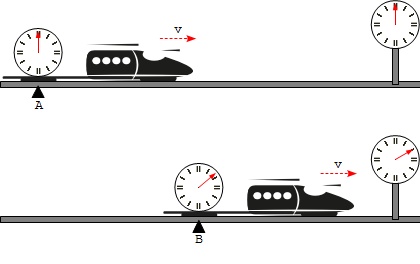Physics Notes - Herong's Tutorial Notes - v3.25, by Herong Yang
Time Dilation - Moving Clock Is Slower
This section provides a quick introduction on time dilation, a phenomenon of difference of elapsed time between two events as measured by observers in different inertial frames that are moving relative to each other.
What Is Time Dilation in Special Relativity? Time dilation in special relativity refers to the phenomenon of difference of elapsed time between two events as measured by observers in different inertial frames that are moving relative to each other.
The special theory of relativity predicts that if we measure the time speed of a moving clock from a stationary frame and compare it with the time speed measured from a frame that is moving alone with the clock, the time speed measured from the stationary frame will be slower.
Or we can say that the time speed of a clock measured when it is moving is slower than the time speed measured when it is stationary.
Or we simply say that a moving clock is slower, or time of a moving clock is dilated.
For example, let' assume that the clock on a moving train is synchronized with a clock on the ground at point A as time of 0 second. When we look at the clock on the ground at point B, it is at 10 seconds. Now if we look at the clock on the train from the ground, it will be less than 10 seconds because of time dilation.
Based on the special theory of relativity, if the train is moving at a speed of 0.6*c, the time of the clock on the train will be 0.8*10 s = 0.8 s, dilated by 20%!

Table of Contents
Introduction of Frame of Reference
Introduction of Special Relativity
►Time Dilation in Special Relativity
►Time Dilation - Moving Clock Is Slower
Demonstration of Time Dilation - Amy on the Train
Demonstration of Time Dilation - Bob on the Ground
Demonstration of Time Dilation - Formula
Elapsed Time between Distant Events
Length Contraction in Special Relativity
The Relativity of Simultaneity
Minkowski Spacetime and Diagrams
Introduction of Generalized Coordinates